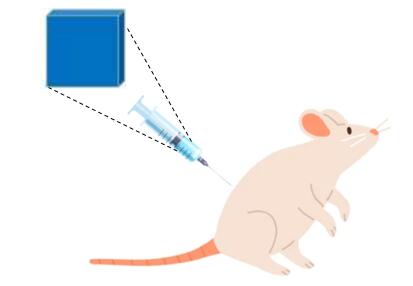- Home
- About Us
-
Products
- Enzymology
- According to the Catalytic Activity
- According to the Type of Materials
- Applications
- Services
- Knowledge Base
- Contact Us

Since inflammation response is often a precursor to certain diseases, treating inflammation can effectively prevent the occurrence of related diseases such as cancer and cardiovascular disease and maintain health. An obvious feature of infammatory tissue is the increasing of reactive oxygen species (ROS) content, and nanozymes can remove excess ROS. Therefore, nanozymes are believed to be able to alleviate inflammation and inhibit the occurrence of related diseases. So far, a variety of nanozymes have been discovered in treating inflammation.
A large number of nanozymes such as iron-based nanozymes, cerium-based nanozymes, manganese-based nanozymes, vanadium-based nanozymes, selenium-based nanozymes, etc. have excellent anti-inflammatory capabilities and are widely used to treat inflammation such as ear inflammation, enteritis, pneumonia, hepatitis, periodontitis, etc. For example, prussian blue nanozyme has superoxide dismutase, catalase and peroxidase mimetic activities as well as the ability to scavenge ROS. They have anti-inflammatory effects on lipopolysaccharide (LPS)-induced mice hepatitis model[1]. In addition, Hyeon et al. successfully prepared Zr4+-doped CeO2 nanoparticles (7CZ NP). As shown in Figure 2, they constructed two inflammatory-related disease models to verify the potential anti-inflammatory ability of 7CZ NP, namely the LPS-induced endotoxemia rat model and the cecal ligation and puncture (CLP)-induced bacteremia mouse model. Their results demonstrated that 7CZ NP could efficiently decrease the ROS level in inflammation tissues and alleviate the inflammation response in both inflammatory models[2].
 Fig.1 Prussian blue nanozymes used in treating inflammation in models of LPS-induced mice hepatitis model.
Fig.1 Prussian blue nanozymes used in treating inflammation in models of LPS-induced mice hepatitis model.
 Fig.2 7CZ NP used in treating inflammation in models of LPS-induced endotoxemia rat model and CLP-induced bacteremia mouse model.
Fig.2 7CZ NP used in treating inflammation in models of LPS-induced endotoxemia rat model and CLP-induced bacteremia mouse model.
Alfa Chemistry can offer a wide variety of nanozymes, which can effectively scavenge intracellular excess ROS and treat inflammation. We will offer the most suitable nanozymes according to customer's detailed requirements. At the same time, we also offer product customization. If you have any questions or needs, please don't hesitate to contact us. Alfa Chemistry will provide you with the most professional service.
References
Please kindly note that our products and services are for research use only.
Privacy Policy | Cookie Policy | Copyright © 2025 Alfa Chemistry. All rights reserved.